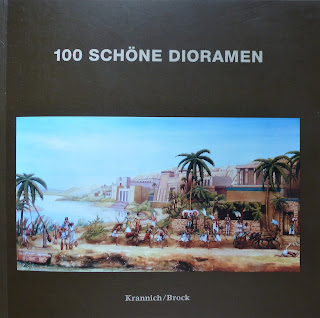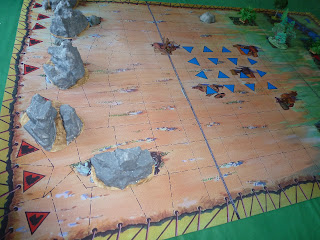From the same stable as the Battle of the Little Big Horn game that Anthony and I played back in June comes this Punic Wars game based on the Battle of Metaurus. Originally designed and published in Spain by Rojas y Malaret, as part of a series of games called "Great Battles of the World" then subsequently produced under licence in Germany by O.M.Hausser.
When I have a little money, I buy Toy Soldiers; and if I have any left, I buy food and clothes. (with apologies to:) ERASMUS
Tuesday, 17 August 2021
Batalla del Metauro
Thursday, 29 July 2021
Wednesday, 30 June 2021
100 Beautiful Dioramas
The latest edition to my bookshelf, building dioramas has always been a prominent feature of the toy soldier collecting scene in Germany and this book illustrates 100 of the best from museum exhibits to examples in private collections. 30mm flat tin figures predominate, as you might expect, but there are plenty that include modern solid figures from 54mm down to 20mm.
The architectural and landscape features are often the most impressive elements in the displays but what they all have in common is that they are exquisitely executed. The dioramas are organised in chronological order of historical period depicted from prehistoric times to WW2.
The subject won't appeal to everyone but if your eye is pleased by pretty pictures of miniature figures then it probably will.
Saturday, 26 June 2021
Battle of the Little Big Horn
Anyone who was a schoolboy in the 1960's will remember the Waddingtons board game of the Battle of the Little Big Horn, it came with some rather nice 40mm figures of General Custer, his 7th Cavalry and the opposing Sioux and Cheyenne Indians. Well sometime last year Anthony had the original board copied onto a 6'x4' mat for use with 54mm toy soldiers but the ensuing pandemic has prevented us playing it, until today, which by the purest of coincidence happens to be the 145th anniversary of the actual battle.
Friday, 18 June 2021
Lancers of the Grand Duchy of Warsaw made by PZG
Two more examples from PZG (Polski Zwiazek Gluchich), they need no introduction, just beautiful figures.



















